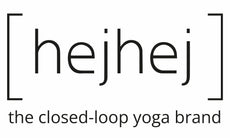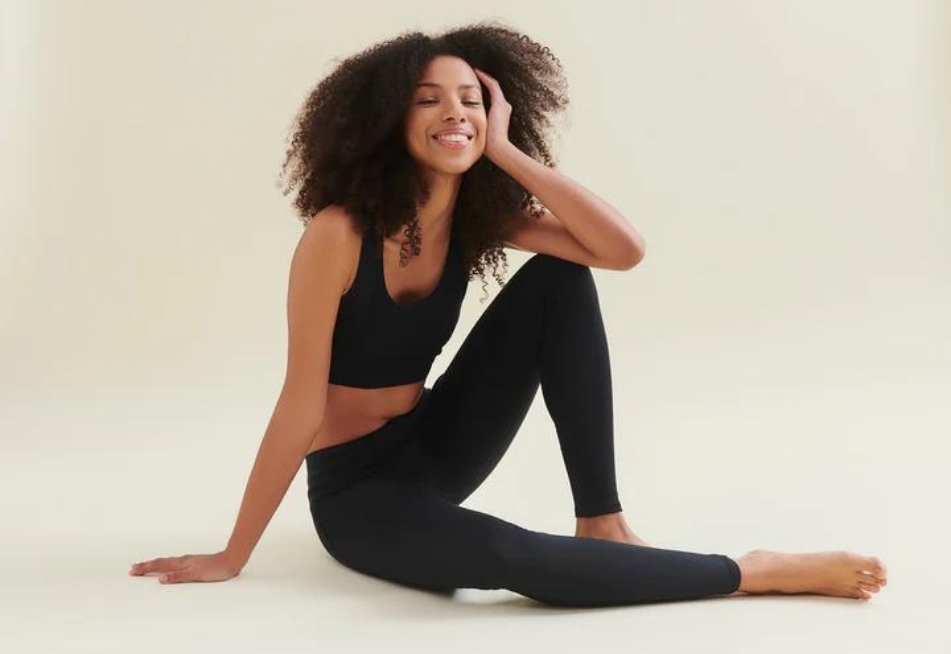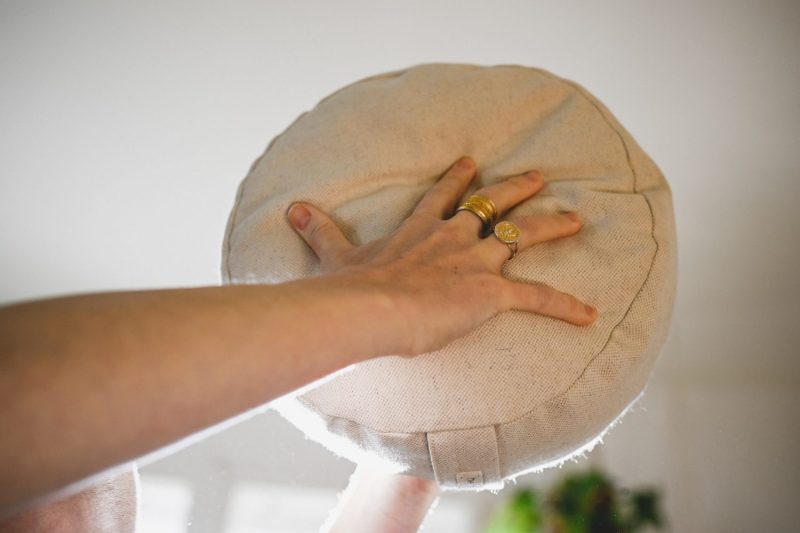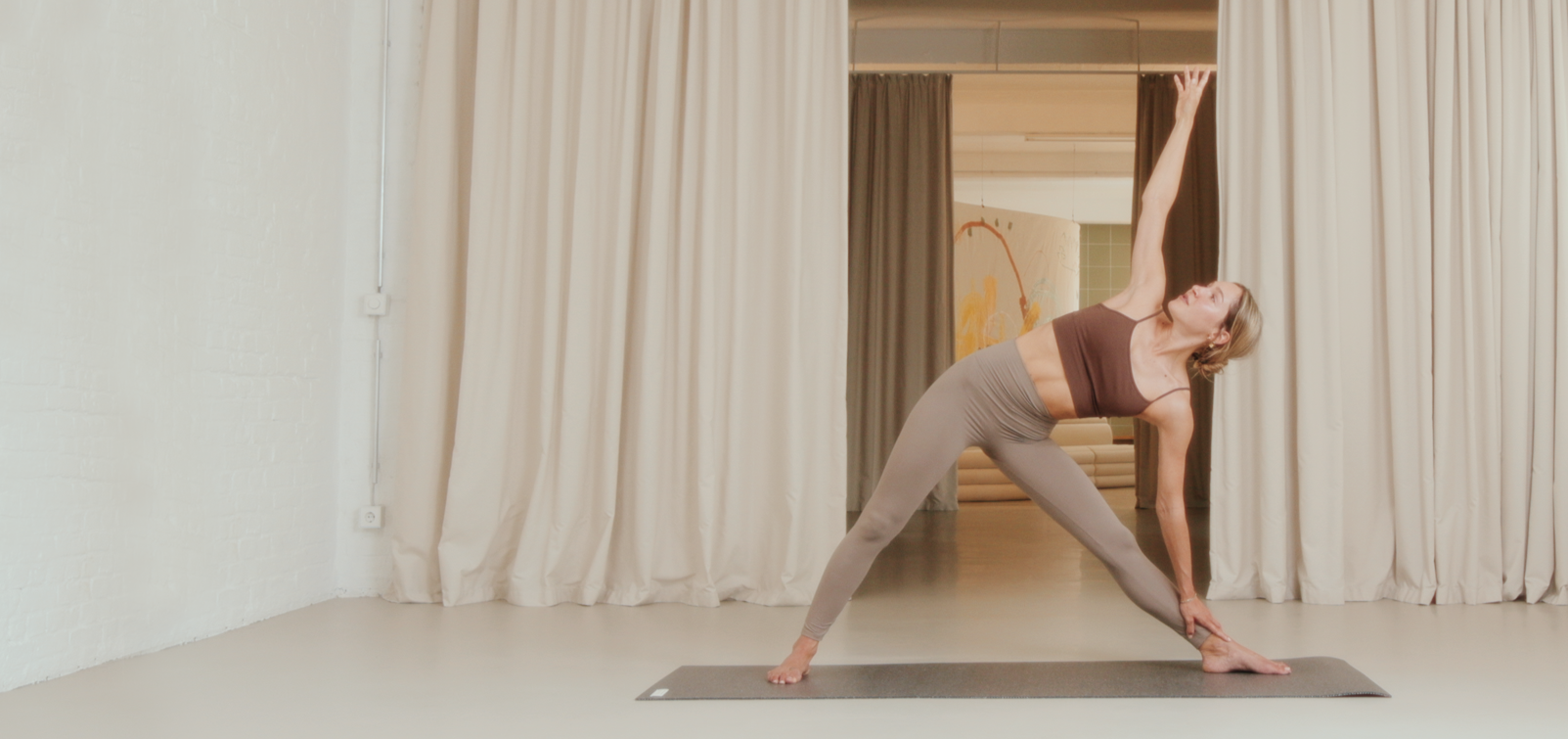Today we have something special for you. You know our mission to make yoga accessible to as many people as possible. We cooperate with yoga teachers who embody exactly that message. We are therefore very happy to work with Lemonia Rose. Yoga in sign language is now available on our YouTube channel for people who are hard of hearing or deaf, or if you are curious about how inclusion is possible in yoga.
At our videoshoot in Cologne, Lemonia was with an interpreter. This allowed us to record the YouTube videos with voiceover so that they are accessible to many people. Thank you Lemonia for your important work. Below, we asked Lemonia a few questions about her relationship with yoga and her teaching style. She also gives us 5 tips on how yoga teachers can make their offerings more accessible and inclusive.
hejhej: Who is Lemonia?
My name is Lemonia Rose. I was born and raised in Athens. I have been living in Germany for 19 years now and live in Cologne. I am 40 years old and a proud mother of 3 children.
As a certified yoga teacher, trained at the Samtosha Academy in Recklinghausen, I would like to make yoga accessible to people who are deaf or hard of hearing.
Due to the challenges that the Corona pandemic has presented us, I have shifted my yoga classes from face-to-face to online classes in order to continue to reach yoga enthusiasts. I have stayed that way to this day.
hejhej: What was your first yoga encounter like? Please tell us briefly about it.
I first came into contact with yoga at the age of 20 when a person in my theater group introduced me to it. At that time, however, my interest waned after about six months.
My true passion for yoga only sparked after a yoga retreat in Thailand. When I was 33 years old, I was looking for ways to relieve my stress. Finally, my husband suggested that I go on a ten-day yoga retreat in Thailand. Since then, I have dedicated my heart to yoga.
hejhej: What does inclusion in yoga mean to you?
Inclusion in yoga is fundamental to me. Every person, regardless of abilities or limitations, should have the opportunity to experience the benefits of yoga. My goal is to remove barriers and ensure that deaf or hard of hearing people also have access to the world of yoga.

hejhej: What are your yoga classes like?
My teaching focuses heavily on visual elements as my main target group consists mainly of people who are deaf or hard of hearing. For this reason, I avoid using music during lessons. In audible yoga classes, music can often be used to accompany breathing rhythms or meditation. In my lessons, however, I use gestures and hand movements to show how the exercises should be carried out. For example, I can give instructions about breathing frequency or breathing intensity.
Since there is no musical accompaniment, I work instead with a timer that vibrates to signal when the allotted time for an exercise has expired.
hejhej: Can you tell us what should be consciously avoided so that yoga offers become more inclusive? Maybe something you consciously avoid?
Some yoga teachers talk continuously during class, which is problematic for me as I am deaf. This approach is less appealing to me. I find it much more effective when the yoga practices are conveyed visually because that way I can grasp everything.
The same applies to the usual greetings, which often begin with small talk. There is an opportunity here to use technologies that can translate or visually represent spoken communication to improve inclusion and understanding for all participants.

hejhej: Finally, would you give us 5 general tips on how yoga teachers can make their offerings more accessible and inclusive?
To make yoga accessible and inclusive for all, yoga teachers can take some important steps:
- Use of technology: Use technology such as smartphones to enable spoken content to be translated or displayed in a visual form.
- Use of gestures and facial expressions: Demonstrate yoga exercises and breathing techniques through the targeted use of gestures and facial expressions to increase comprehensibility for all participants.
- Tactile signals for meditation and relaxation: Gentle touches or pats on the shoulder can be used, for example, to announce the end of meditation or relaxation exercises.
- Choose placement wisely: Arrange the beginners between the experienced participants so that they can orient themselves to them.
- Use of hand signals: Instead of spoken instructions, hand signals can be used to indicate how often to breathe or where on the body to perform the exercise.
Thank you very much Lemonia for your important words and your time. We are very happy to publish all the videos filmed with you on our YouTube channel. Thank you for making yoga more inclusive together!
Here you find Lemonia on Instagram.
The the videos with Lemonia:
Yoga in sign language | 20 min Flow
Gentle yoga flow for hearing impaired/deaf yogis | 20 min | Yoga in sign language





